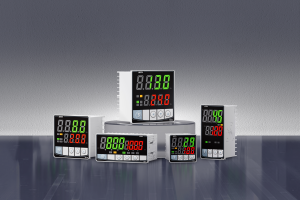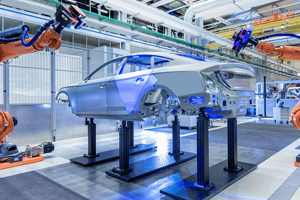What Does PID Mean in Controls? Understanding PID Controllers and Their Applications
Learn what PID means in controls, how PID controllers work, their applications, and the importance of tuning. Discover the advantages and limitations of PID control in industrial automation.
1. Introduction
Proportional-Integral-Derivative Control, more commonly referred to by its acronym PID control, is an essential concept in industrial automation and process control systems. PID plays an essential part in making sure systems operate effectively and reliably - knowing about PID controls is therefore vital if one works in engineering, manufacturing or any field that relies upon precise control mechanisms for success.
2. What Is Proportional-Integral-Derivative (PID)?
PID stands for Proportional, Integral and Derivative feedback control system used widely in industrial control applications. Each component within PID serves a particular function - proportionality (proportion), integrality and derivative.
* Proportional (P): This component reacts to any current error between desired setpoint and actual process variable values, producing output proportional to that value if large enough; otherwise weak actions will take effect instead.
* Integral (I): The integral component responds to past errors by adding up cumulative amounts and integrating it into control actions over time, helping eliminate any residual steady state errors that the proportional control alone cannot remove; further ensuring process variables reach and remain near their setpoint values.
* Derivative (D): The derivative component reacts to the rate of error change by forecasting future errors based on their current rate of change, providing a dampening effect and thus decreasing overshoot and improving system stability.
3. How PID Controllers Operate
PID controllers work via a feedback loop mechanism with three primary elements being setpoint, process variable and control variable making up this loop.
* Setpoint: This refers to the desired value that the system seeks to attain.
*Process Variable:The current value of the system parameter being controlled.
* Control Variable: Output from a PID controller that alters process to meet setpoint.
PID controllers continuously calculate error values as the difference between setpoint and process variable values, using proportional, integral, and derivative terms to derive control variable calculations that adjust process variable closer towards its setpoint value. These controls enable further process adjustments as the error value approaches zero.
Temperature control systems use three types of variables as indicators: setpoint (the desired temperature), process variable (current temperature) and control variable (ie the power supplied to heater). A PID controller adjusts this power as necessary so as to maintain desired temperatures.
4. Tuning PID Controllers
Tuning a PID controller accurately is key for optimal performance, ensuring it reacts promptly and precisely when changes in setpoint occur or disturbances arise. There are various approaches for fine-tuning PID controllers:
* Ziegler-Nichols Method: This popular heuristic tuning approach requires setting all integral and derivative gains to zero while increasing proportional gain until oscillation begins; then use ultimate gain/oscillation period information to calculate PID parameters.
* Cohen-Coon Method: Ideally suited for first-order plus dead time systems (FOPDTs), this approach offers formulae to calculate PID parameters based on step response of your system.
*Manual Tuning:This involves manually adjusting PID parameters while monitoring system response; this approach takes experience and intuition but may provide effective fine-tuning of parameters.
Effective tuning strategies include making incremental adjustments with small steps at first before increasing responsiveness or stability as necessary. When considering tradeoffs between responsiveness and stability it is also crucial.
5. Applications of PID Controllers
PID controllers have many uses across industries and applications. Some common examples are:
* Temperature Control: PID controllers are widely utilized within HVAC, ovens and refrigeration units in order to achieve accurate temperature regulation.
* Speed Control: PID controllers can regulate the speeds of electric motors to provide smooth and precise operation.
*Pressure Control: Pressure-indicator-displacer (PID) controllers are commonly employed within process industries to maintain desired pressure levels within pipelines and vessels.
*Flow Control: PID controllers used in chemical and water treatment plants use PID logic to monitor liquid and gas flows to maintain optimal process conditions and regulate them accordingly.
PID controllers are widely utilized in tanks and reservoirs to achieve liquid level regulation at optimal levels.
6. Advantages and Limitations
Its PID controllers present numerous advantages over traditional control methods, including:
* Simplicity: PID controllers are generally easy to understand and implement.
* Versatility: They can be applied across many applications.
*Efficiency: PID controllers offer precise and stable control, providing accurate results with every use.
However, this approach comes with its own set of constraints:
* Tuning Complexity: Tuning properly can be complex and time consuming.
* Nonlinear Systems: PID controllers may not provide optimal results when applied to highly nonlinear systems.
*Noise Sensitivity: Derivative terms can exacerbate noise within a system and increase instability, potentially leading to its collapse.
7. Conclusion
PID control is a fundamental concept in industrial automation and process control systems. Understanding its principles, how PID controllers function and tuning them properly are crucial elements to reaching optimal system performance. While they do have their limitations, PID controllers remain versatile solutions suitable for numerous control applications - their future may even hold increased improvements to tuning methods as technology develops further alongside advanced control strategies.
- What is Filter Coefficient in PID Controller? Understanding Its Role and Applications
- How to Make a PID Controller in Arduino-Step-by-Step Guide























